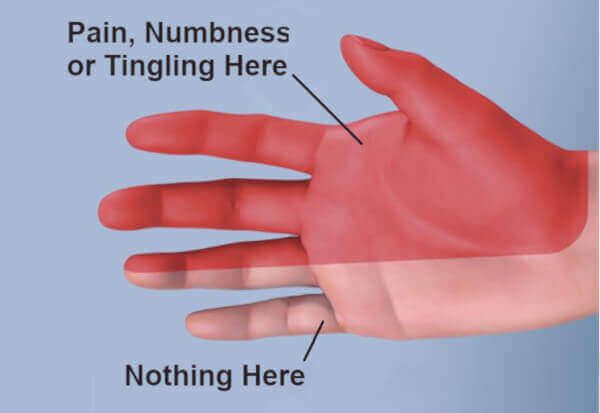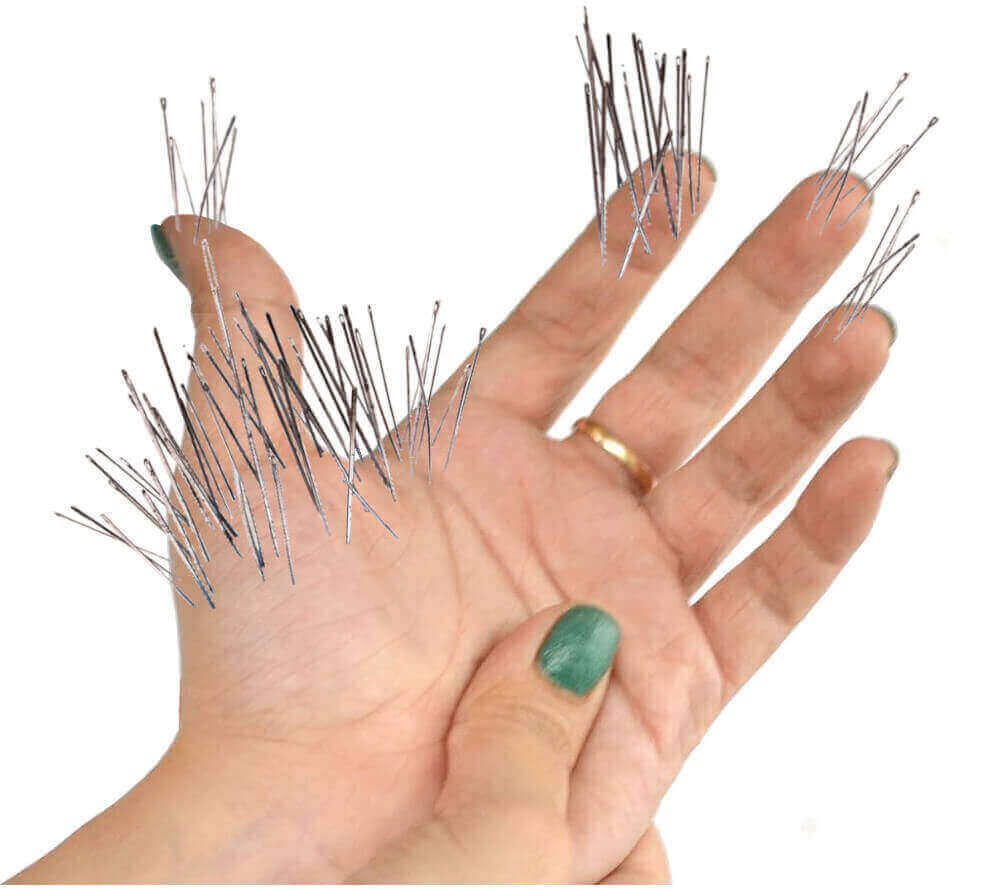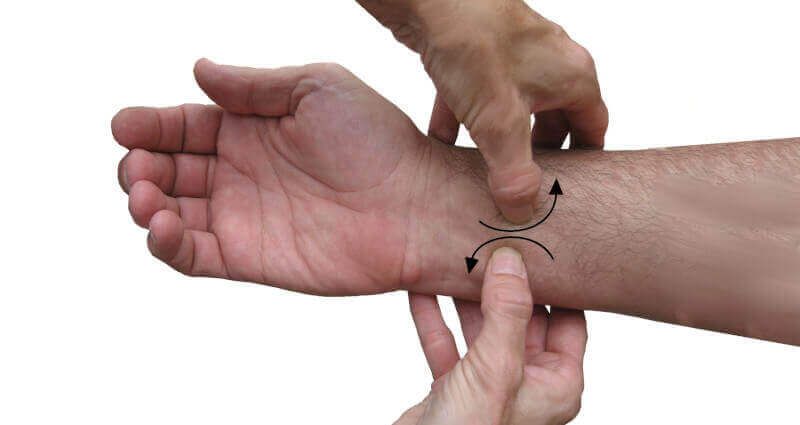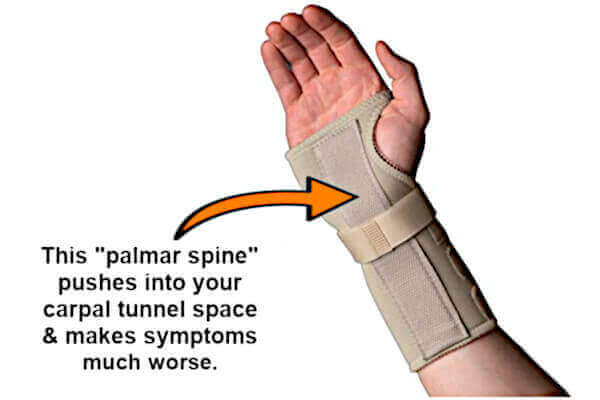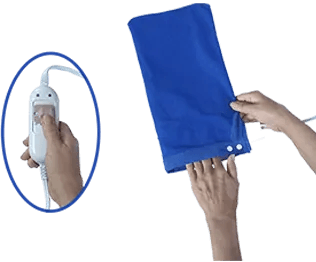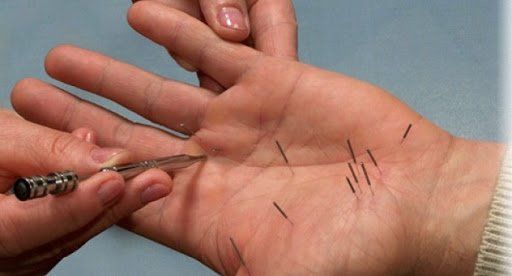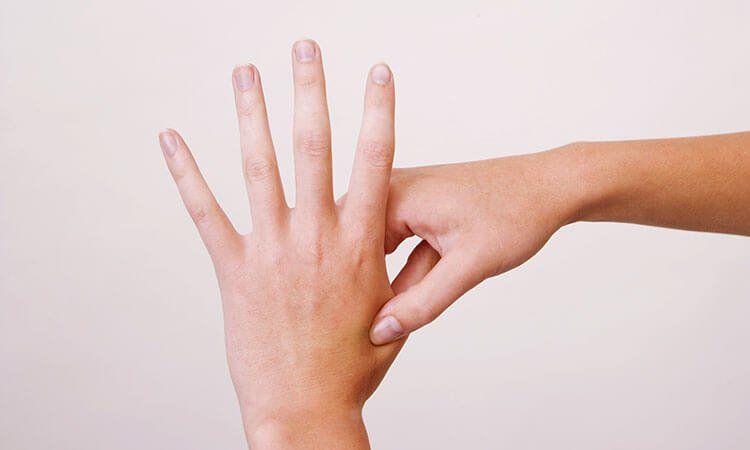Review of Natural Carpal Tunnel Treatments
From Dr. Z - Carpal tunnel syndrome specialist
Natural Carpal Tunnel Treatments
Do you have carpal tunnel syndrome? Many people are unfamiliar with non-surgical (including natural) carpal tunnel treatments for this disorder. Actually, most believe that surgery is the only effective treatment for carpal tunnel syndrome. But two important facts are less well known.
First, the success rate of surgery is not terrific. By 6 months post-surgery, 50% of operated patients are unsatisfied with their results. And by years 2-3 after surgery, about 50% of patients still remain unsatisfied. The main reason for dissatisfaction is the return of symptoms.
The second fact is directly related to the first. That is, the high failure rate of carpal tunnel surgery by the third year. As a result, the American Academy of Orthopedic Surgeons (AAOS) recommends trying all non-surgical (including natural) carpal tunnel treatments before considering surgery. That's because in approximately 90% of patients, such remedies eliminate carpal tunnel symptoms completely and permanently.
About carpal tunnel syndrome
If you have pain, numbness or tingling in your fingers or hand, it might just be due to over-working them. Muscle and joint fatigue can bring on these symptoms.
But if one or more of these symptoms persist, then you likely have carpal tunnel syndrome. And you’re in the company of 5 million Americans with the same problem. Each year, over 250,000 Americans have carpal tunnel surgery to try and ease their painful or numb hands.
The unfortunate problem is that most of these patients never heard of alternatives to surgery. If they knew about non-surgical (natural) carpal tunnel treatments they most likely would never elect to undergo hand surgery.
What causes carpal tunnel syndrome?
The current medical opinion is that carpal tunnel syndrome arises from repetitively using your hands and fingers. That's especially the case where hands make repetitive and forceful movements. This is why many doctors consider carpal tunnel syndrome as a repetitive stress injury.
The problem with all this is there's a huge percentage of people who do no such daily activities with their hands. But they still develop full-blown carpal tunnel syndrome. The best guess for this paradox is that carpal tunnel is probably a genetic disorder. That means you may or may not be prone (i.e., have a tendency or predisposition) to this disorder. And performing repetitive hand or finger tasks merely allows the condition to blossom.
It's a lot like having diabetes. Diabetes is in your genes. You get it only if you're genetically predisposed. It all depends on your living habits. If you're genetically prone to diabetes, then becoming obese will trigger it. But if you're genes are not programmed to cause diabetes, you can be massively obese but never see it.
Signs & symptoms
Carpal tunnel syndrome is a very common hand condition. The hallmark signs are sensations which occur mostly on the palm side of the hand and fingers. They never include the pinky finger. These symptoms are:
- Pain
- Tingling (pins & needles)
- Numbness
- Weakness
Other unpleasant sensations like burning, soreness, puffiness, and loss of grip strength can also occur. Often when gripping an object (like a coffee cup) you might feel shooting electric shocks.
In the beginning, symptoms are usually felt when your hand is at rest and not while performing vigorous activity. This is when symptoms like numbness or pain wake you up while trying to sleep.
As the disorder advances, these same symptoms persist into the daytime. You probably wake up with them. Many patients feel increased intensity of symptoms (especially numbness and pain) while driving their car.
Carpal tunnel syndrome usually comes and goes in the earlier stages. This distinguishes carpal tunnel from wrist tendonitis. Tendonitis is not permanent and symptoms are usually most intense while your hand is working.
As carpal tunnel severity increases further there are no breaks in the symptoms. They bother you day and night. In fact, many people with severe carpal tunnel syndrome are so crippled they can no longer perform their job function. That's especially the case if it's a job associated with developing carpal tunnel syndrome.
What surgery does
Most doctors will tell you to either wear a brace at night (which IS good advice) or to see a hand surgeon who will recommend carpal tunnel surgery. That's why carpal tunnel surgery is now the second most common operative procedure in the USA. That means it’s a big cash cow for surgeons.
Carpal tunnel surgery (more accurately called carpal tunnel release surgery) aims to decrease pressure inside your wrist joint. Pressure on the median nerve is the source of all the symptoms. That pressure is due to inflamed and swollen tendons which have been stressed repetitively.
To relieve that pressure, the surgeon must cut the transverse carpal ligament deep inside the wrist joint. When that happens, the wrist bones loosen up and move apart. This creates more "breathing room" for the nerve.
The surgeon can cut the ligament using one of two surgical methods:
- Open carpal tunnel release surgery
requires a 2-3 inch long slit on your palm. This enables the surgeon to better see the ligament and all adjacent structures. It's considered a safer procedure because of the reduced chance of an accidental injury to nerves or blood vessels. But it also causes more hand trauma which takes longer to
recover
from.
- Endoscopic carpal tunnel release surgery requires either one or two small holes in the hand. This results in much less hand trauma, which means a speedier recovery. But the limited view of the endoscope also makes this procedure riskier. The surgeon cannot see all of the tissues as with the open technique, and accidental lacerations may occur.
Non-surgical, natural carpal tunnel treatments
Today doctors are steering increasingly more patients away from surgery and toward surgical alternatives. That's mostly due to the relatively high dissatisfaction rate of surgery at year 3. This also goes along with the AAOS guidelines, which recommends that every patient try all available non-surgical remedies, including natural carpal tunnel treatments.
Ironically, most natural carpal tunnel treatments are already widely accepted as providing long-lasting relief. I have listed the most popular ones below. The treatments range from the most effective (5 star) to least effective (1 star). This ranking is based upon:
- Published medical data
- Scientific reports
- In-depth reviews with therapists
- My personal discussions with thousands of patients over 2 decades
1. Myofascial Release Massage
☆☆☆☆☆
The primary cause of carpal tunnel syndrome is tendon swelling due to inflammation. That swelling pushes on the median nerve deep inside the wrist joint. To permanently reduce the inflammation, merely eliminating pressure on the median nerve (like surgery does) is not enough. That's why symptoms return by year 3. And it's why carpal tunnel surgery fails so often.
So what relieves the inflammation permanently? The inflammation is caused by adhesions on the tendons. Therefore you must destroy those adhesions to have lasting relief. The way to do this is using my myofascial release massage.
Myofascial release reduces the swelling and inflammation. It does so because it breaks up the adhesions causing it. At the same time, it drains excess fluid from deep within the wrist joint. That fluid is also responsible for the pressure build-up.
In short, myofascial release massage is one of the most effective, all-natural, carpal tunnel treatments. But the downside is that you need this therapy performed by someone who knows how to do it properly. And you need it EVERY DAY for at least 4 weeks.
(Note: the current trend toward using vibration massage for various painful conditions is harmful when applied to carpal tunnel syndrome.)
Physical therapists and massage therapists are well trained in myofascial release. But (obviously) seeing a therapist that often can be very expensive.
This is why the
Carpal Rx was invented. It an electro-mechanical machine that’s calibrated to perform the identical myofascial release massage therapy on your wrist and forearm. And it does so automatically. You use it every day, at home, and at your convenience. And it costs a fraction of a therapist’s fees.
2. Night bracing ☆☆☆☆☆
Using a wrist brace isn't strictly a "natural" carpal tunnel treatment. After all, you're using a man-made product. But there's no argument that bracing is safe, non-invasive, non-technical, and chemical-free. This is why I've included it here -- and because of it's astounding effectiveness.
Almost every instance of carpal tunnel syndrome can be relieved with night (nocturnal) bracing - but only if symptoms have not advanced too far. Therefore, in the mild or moderate stages of carpal tunnel syndrome, it's a preferred method of treatment.
It's crucially important to know these two instructions about bracing for carpal tunnel syndrome.
- First, you must only brace your hand at night, while sleeping. This prevents you from unconsciously over-flexing your wrist, thereby damaging tissues inside. Never brace your hand in the daytime, while you're working. Doing so makes it more difficult for your wrist to move. You just end up fighting against the brace while also trying to use your hand. This increases the damage inside the wrist joint.
- Second, never use a wrist brace that's isn't a
certified carpal tunnel brace. Generic wrist braces sold at Walmart, CVS, Walgreens -- and thousands of retail websites -- are usually not "certified" for carpal tunnel.
Here's how you can tell a certified from a non-certified carpal tunnel brace. If the brace has a palmar spine (see image above) then it's NOT certified. That spine will push into your wrist joint, increasing pressure and making your carpal tunnel symptoms much worse. Learn more about carpal tunnel braces here.
3. Heat ☆☆☆☆
The human body thrives on heat. We spend a huge proportion of our caloric intake just to produce body heat. Heat enables biochemical reactions to take place. The warmer the biochemicals, the more efficient the reactions.
Those reactions are involved in every part of the body's healing process. They range from making new proteins to replacing damaged cells. And when it comes to carpal tunnel syndrome, removing adhesions and replacing them with healthy tissue is also a crucial healing process.
So to the body, any extra heat it can get is like gold. It uses the heat to speed key biochemical reactions and therefore facilitate the healing process.
Among the natural carpal tunnel treatments, this one will not help symptoms too much when used alone. In other words, heat therapy by itself should be used in conjunction with another therapy. The heat amplifies the effects of the other natural carpal tunnel treatments on this list.
4. Yoga ☆☆☆☆
Various medical studies have proven that yoga exercises can reduce symptoms of carpal tunnel syndrome. Yoga exercises should be performed as often as possible -- preferably twice per day -- for as long as it takes for symptoms to resolve.
The most effective yoga exercises emphasize opening, stretching, and strengthening the joints of the upper body. The Journal of the American Medical Association reports amazing results with yoga when compared to not using yoga exercises.
People who practiced yoga and performed yoga exercises daily over a two month period showed marked improvement in their carpal tunnel syndrome. This result is supported by countless anecdotal reports from carpal tunnel patients who use yoga regularly.
Yoga exercises are also especially good for meditative purposes. This provides the person who suffers with pain or numbness with a "double benefit" from one technique.
5. Acupuncture ☆☆☆
Another popular, natural carpal tunnel treatment is acupuncture. Unlike daily myofascial release massage or yoga, some patients benefit from acupuncture while others do not. The range of acupuncture's effectiveness is extremely wide, going from "ineffective results" to "complete success". Nobody is sure exactly why this occurs.
Medical research has shown that acupuncture unblocks nerve impulses along the pathways that mediate pain. The evidence indicates that acupuncture needles enhance positive energy flow along these pathways. Other evidence suggests the acupuncture needles release pain relieving chemicals and promote circulation.
The number of acupuncture sessions you need to relieve symptoms depends on how long you’ve had carpal tunnel syndrome. It also depends a great deal on the severity or intensity of symptoms. Other factors related to an acupuncture regimen (and ultimately, its success) are your general health and how much you use your hands every day.
In general, acupuncture practitioners recommend 3 sessions per week for 10 weeks. A major drawback is that once the needles are removed, the pain will return - sometimes quickly (after a few hours) or a day later. Then you must wait again until the next treatment.
6. Acupressure ☆☆
Acupressure is a technique based on the same primary principle as acupuncture. It is also an all-natural carpal tunnel treatment. There are scant few scientific reports on the effectiveness of acupressure, at least compared to acupuncture.
Acupressure is closely related to reflexology. Instead of inserting needles into acupuncture points, the acupressure practitioner applies pressure with their hands and fingers. It’s thought that this pressure stimulates blood flow to the patient’s extremities, like the fingers, hand, and wrist. As a result, it alleviates the symptoms of carpal tunnel syndrome.
While just as popular as acupuncture, acupressure has the same downsides. It is only relatively effective for carpal tunnel syndrome in some people but not in others. On the positive side, you can learn to perform acupressure on your own hand. It takes some skill and a fair amount of practice. But the result may benefit those who are persistent with it.
7. Vitamin B6 ☆
The most controversial of the natural carpal tunnel treatments is vitamin B6 supplementation. That’s because vitamin B6 deficiency is associated with carpal tunnel syndrome. So it makes sense to supplement the vitamin deficiency so the symptoms will go away.
But study after study points to the fact that vitamin B6 doesn't work consistently or with much effectiveness to relieve carpal tunnel symptoms. The good news is that vitamin B6 at less than 200 mg per day is not likely to cause adverse effects. So most doctors take the approach that “if it can’t hurt” then their patients should try vitamin B6 to alleviate their carpal tunnel symptoms.
Conclusions
The best natural carpal tunnel treatments are actually the ones that work for the long term. They have a better record of providing good results when compared to surgery. These treatments are myofascial release massage, nocturnal bracing, heat therapy, yoga, acupuncture, and acupressure. Taking vitamin B6 supplements does not guarantee positive results, but usually it can't hurt you, either.
Sources
1) https://pubmed.ncbi.nlm.nih.gov/9820263/
2) https://pubmed.ncbi.nlm.nih.gov/9820263/
3) https://pubmed.ncbi.nlm.nih.gov/9820263/



